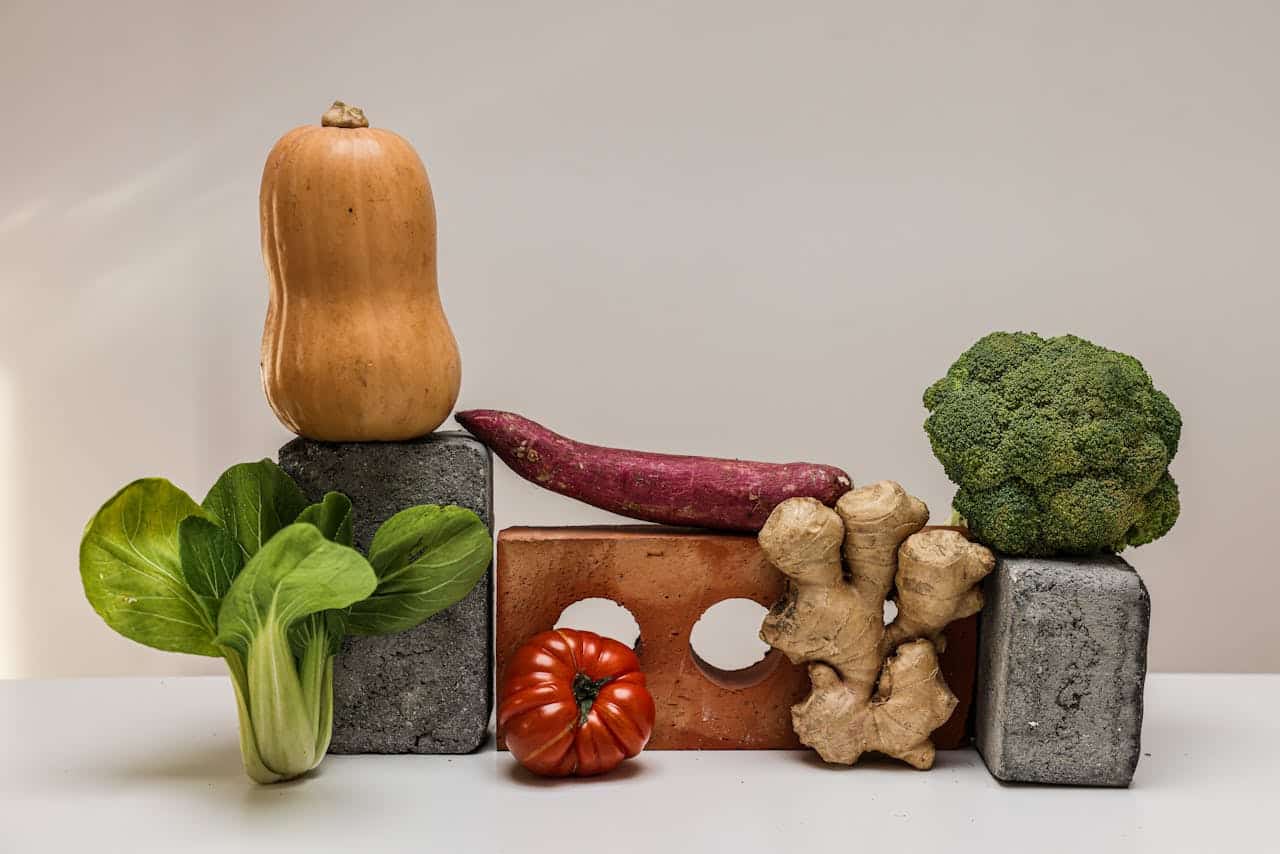
Ozempic (semaglutide) is an injectible antidiabetic medication prescribed by healthcare professionals to control blood sugar levels in those with type 2 diabetes. While Ozempic is an effective treatment, it is important to avoid or limit certain foods while taking this medication in order to get the best results from it and minimize potential side effects.
What Ozempic foods should you eat on a balanced diet for effective blood sugar management, and what products are better to stay away from while taking the medication? Check out the 7 foods to avoid on an Ozempic diet down below.
Table Of Contents
ToggleOzempic – What Is It?
Ozempic, the brand name drug of semaglutide, is a diabetes medication manufactured by the Danish pharmaceutical company Novo Nordisk. It’s a prescription medication used for lowering blood sugar levels in people suffering from type 2 diabetes (it cannot be used to treat type 1 diabetes). Ozempic is a GLP-1 medication (glucagon-like peptide-1) and falls under the same category as other diabetes medications – Saxenda, Rybelsus, and Wegovy.
How Does Ozempic Work?
Ozempic works by mimicking the actions of the natural hormone GLP-1 in the body. When you eat, your body typically releases insulin to help regulate blood sugar levels by facilitating the uptake of glucose into cells for energy. Semaglutide, the active ingredient in Ozempic, stimulates the pancreas to release more insulin in response to rising blood sugar levels. This helps lower blood sugar levels after meals.
In addition to promoting insulin release, semaglutide also reduces the production and release of glucagon from the pancreas. Glucagon is a hormone that raises blood sugar levels by prompting the liver to release glucose into the bloodstream. By inhibiting glucagon, Ozempic helps to further lower blood sugar levels.
Some individuals may experience a reduced appetite while taking Ozempic. This can lead to decreased food intake and may help with weight management. Weight loss can be beneficial for individuals with type 2 diabetes, as it can improve insulin sensitivity and glycemic control.
How to Take Ozempic?
Ozempic is an injectable medication and is meant to be taken once a week, which is one of its main advantages. The typical dose of Ozempic is 0.25 milligrams once weekly for four weeks, then 0.5 milligrams once a week for at least four weeks.
Side Effects of Ozempic
While Ozempic is generally well-tolerated by patients, there are some side effects you should be aware of before you start taking the medication. The most common side effects of Ozempic include:
- Nausea
- Vomiting
- Mild stomach pain
- Bloating
- Diarrhea
- Constipation
- Discomfort of the injection site
Although rare, Ozempic also carries the risk of potentially more severe side effects. These include:
- Serious allergic reactions
- Trouble swallowing
- Shortness of breath
- Rapid heartbeat
- Pancreas inflammation (pancreatitis)
- Low blood sugar levels (hypoglycemia)
- Thyroid tumors
- Kidney problems
- Gallbladder inflammation
- Changes to vision
If you develop a fever, experience a lump or swelling in your neck, have trouble swallowing, or are feeling weak or in pain after taking Ozempic, seek medical attention immediately.
Who Should Avoid Using Ozempic?
Ozempic may not be suitable for everyone. You should avoid using the medication if you:
- are allergic to liraglutide or other ingredients in Saxenda.
- have a family history of thyroid cancer – medullary thyroid carcinoma (MTC).
- have multiple endocrine neoplasia syndrome type 2 (MEN 2).
- are breastfeeding, pregnant, or planning to get pregnant.
Before you start an Ozempic treatment, it’s essential to discuss your medical history with your healthcare professional so that they can determine whether the medication is safe for you and suitable for your needs. Make sure to always inform your medical provider about any other medications you may be taking, including over-the-counter medications.
Ozempic Diet – What Foods to Avoid?
While there aren’t specific foods you should eliminate completely from your diet when taking Ozempic, there are several food products you should avoid or consume in limited quantities to maintain or improve blood sugar levels. Semaglutide foods to avoid while taking Ozempic include:
High-sugar foods
Foods high in sugar can cause rapid spikes in blood sugar levels and counteract the effects of Ozempic. Products like desserts, candy, cookies, ice cream, sweetened breakfast cereals, or even condiments have a lot of added sugar, and they aren’t suitable for individuals on an Ozempic treatment or weight loss journey. Sugary foods are normally high in calories and contribute to weight gain, which is particularly risky for individuals with type 2 diabetes.
Instead of sugary snacks, choose fresh fruits – they contain healthy complex carbohydrates and can help you manage blood sugar levels when taking Ozempic. Such fruits as berries, kiwis, or grapefruits should find their place in your daily diabetic menu due to their low sugar content. However, it’s crucial to remember that some fruits, such as bananas, grapes, or mangoes, are naturally high in sugar, and even though they’re healthy, they should be consumed in moderation. Also, beware of canned fruits in syrup, which also contain high amounts of sugar and are not recommended for those who take Ozempic.
Refined carbohydrate foods
If you take Ozempic or are trying to lose weight, foods rich in refined carbohydrates are among those products you should exclude from your diet. Simple carbohydrates include sugars and refined grains that have been stripped of the nutritious bran and fiber – essential elements of a balanced diet. Those “bad” carbohydrates can be found in, for example, white bread, white flour, pizza dough, pastries, and white rice.
Instead of simple carbs, enrich your diabetic diet with high-fiber foods and whole grains, such as whole wheat bread, oats, brown rice, quinoa, and lentils. These products include plenty of fiber and can help stabilize blood sugar levels.
High-fat foods
Just like foods high in sugar, fatty foods can also cause rapid blood sugar spikes, especially products containing trans fats. Avoid fried foods, like fried chicken, French fries, doughnuts, crisps, and other processed foods. Greasy foods contribute to heart disease, which is the main cause of death among people with diabetes, therefore, it’s best to eliminate those products from your diet. What’s more, fatty meats, such as sausages, burgers, bacon, or kebabs, as well as full-fat dairy products, like butter or heavy cream, contain saturated fats, which can also be harmful for people with type 2 diabetes who take Ozempic.
To make sure you have your sugar levels under control, incorporate healthy fats into your daily menu – choose avocados, nuts, seeds, olive oil, and fatty fish, for example, salmon or mackerel. These nutritious fats can help improve insulin sensitivity and lower the risk of rapid blood sugar spikes. Instead of fatty meats, opt for lean protein sources, such as cooked chicken, turkey, tofu, and beans, that will not only help you manage blood sugar levels but also keep you full and support muscle growth.
High-glycemic starchy vegetables
While vegetables are undoubtedly a key element of a balanced diet, not all vegetables are suitable for those who take Ozempic. Starchy vegetables, like white potatoes, butternut squash, corn, green peas, or beets, can elevate blood glucose levels, especially when consumed in large quantities.
If you’re on an Ozempic treatment, load up on non-starchy vegetables like leafy greens, broccoli, cauliflower, bell peppers, and zucchini. These are low in carbohydrates and will keep your blood glucose levels in check.

Sugary drinks
Similar to high-sugar foods, drinks with added sugar also contribute to high blood sugar levels and should be avoided while taking Ozempic. Sweetened juices, soda, and energy drinks, as well as coffee with flavored syrups, contain high amounts of sugar, and you should exclude them from your Ozempic diet.
The best drink option, and ultimately an inseparable part of any healthy diet, is obviously plain water, that you should ideally drink in the amount of at least 2 liters a day. If you don’t like the taste of plain water, you can make your own flavored water by adding fresh fruits like lemon or strawberries and a few mint leaves.
Alternatively, you can opt for unsweetened tea, preferably decaffeinated, which works equally well in a weight loss diet. Add a few slices of lemon and some ice cubes to make healthy iced tea that you can consume all day, completely guilt-free. Such diabetes-friendly drinks will not only quench your thirst but also help you with blood sugar control.
Caffeine
Although drinking coffee in moderate amounts isn’t proven to be harmful for diabetics, excessive caffeine consumption can affect blood sugar levels and potentially lead to fluctuations that may need to be managed alongside your diabetes treatment plan. As a stimulant and diuretic, caffeine can cause dehydration and elevate the risk of hypoglycemia when consumed along with Ozempic. To keep your blood sugars stable while drinking coffee, it’s essential that you consume enough fluids, like plain water or unsweetened tea, throughout the day.
As a general guideline, your caffeine intake should be limited to no more than one cup per day while you’re on an Ozempic treatment. However, it’s essential that you listen to your body and how it responds to caffeine. If you notice that the side effects of Ozempic tend to worsen after drinking coffee, consider further cutting back on your caffeine intake or eliminating it completely from your diet.
Alcohol
While moderate alcohol consumption isn’t entirely prohibited on a diabetic diet, it’s not recommended if you’re taking Ozempic as it may increase the risk of dehydration or developing low blood sugar, known as hypoglycemia. If you choose to consume alcohol, limit yourself to one or two drinks per day and ideally avoid fancy cocktails, which also contain high amounts of unhealthy sugar. Also, when drinking alcohol, make sure to eat regularly (every few hours) to keep your blood glucose levels stable and prevent them from dropping too low.
Are You Taking Ozempic? Don’t Eat Too Much
If you’re using Ozempic, it’s important to be mindful of how much you eat. Eating too many calories while taking Ozempic can result in an upset stomach, nausea, and diarrhea. It’s best to adjust your diet and portion sizes adequately to make sure you are not eating more than you should. Not only will you be able to avoid stomach discomfort, but also you will be able to maintain healthy blood sugar levels as your body adjusts to the medication. Consider eating smaller meals, as consuming too much (even healthy foods) can affect the effectiveness of Ozempic.
The Bottom Line
Ozempic plays an important role in managing effects related to type 2 diabetes. To get the most out of it, it’s important to know which foods to avoid while taking this medication. To help decrease your risk of getting side effects due to Ozempic, it’s best to avoid foods high in fat and sugar, as well as limit your alcohol and caffeine intake.
Eating a balanced diet with plenty of whole, unprocessed foods is always the most reliable strategy for supporting general health. By avoiding risky foods and including healthy options, the desired therapeutic effects of Ozempic can be as successful as possible.
Share:












